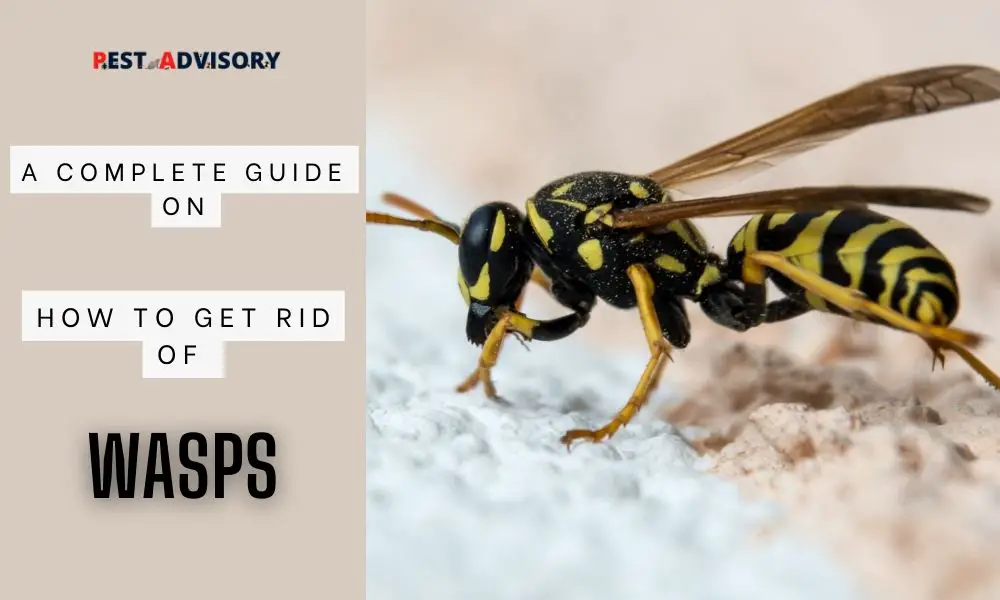Are wasps wreaking havoc in your home and garden, ruining your outdoor gatherings and causing distress?
Fear not! In this comprehensive guide, we will equip you with the knowledge and tools to reclaim your space and bid farewell to these buzzing pests.
Whether you prefer eco-friendly methods, DIY solutions, or the expertise of professionals, our complete guide on how to get rid of wasps will empower you to take back control and enjoy a wasp-free environment once again.
Important Note: If you're tired of pests and want a reliable solution, then you should definitely consider seeking help from a professional pest control company. DIY solutions can be effective, but if you're dealing with a significant pest infestation, you don't want to rely solely on DIY methods. Pest control companies typically don't charge huge fees. You can fill out this form to receive free quotes from the top local pest control companies, and compare the quotes and see for yourself. Then, finally, your pest problems will be eliminated for good.
What Attracts Wasps?
Wasps are attracted to sweet smells and sugary foods such as fruits, soda, juice, and cookies dissolved in water. They are also drawn to flowers, fruit trees, and the smell of garbage. Their sensitive sense of taste and smell can even detect traces of food on human skin.
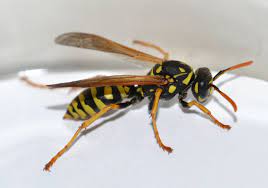
Identifying Wasp Nests
Importance of Identifying Wasp Nests
Before embarking on any wasp removal methods, it is crucial to accurately identify the location of wasp nests.
Identifying the nest helps ensure that you are targeting the source of the problem and taking appropriate measures for effective removal. Sometimes people do get confused between hornets’ and wasps’ nests.
Attempting to eliminate wasps without locating their nests may lead to temporary solutions or ineffective results, as the colony can rebuild or relocate elsewhere on your property.
Locating and Recognizing Different Types of Wasp Nests
Ground Nests
Some wasp species, such as yellow jackets, build their nests in the ground.
These nests are usually found in abandoned rodent burrows, under porches or decks, or in low-lying areas.
Look for small openings in the soil, often surrounded by wasp activity.
Aerial Nests
Paper wasps, bald-faced hornets, and European hornets construct aerial nests.
Paper wasp nests are papery and umbrella-shaped, often attached to eaves, tree branches, or outdoor structures.
Bald-faced hornets and European hornets build larger paper nests, typically found in trees, shrubs, or on buildings.
Mud Nests
Mud daubers create tube-shaped nests using mud or clay.
These nests are commonly found in sheltered areas such as eaves, attics, or wall voids.
Look for small cylindrical structures made of mud, usually attached to vertical surfaces.
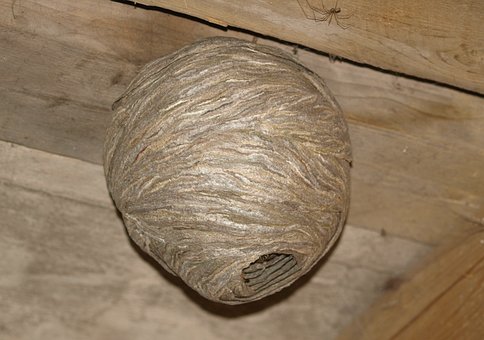
How to Get Rid Of Wasps
Natural and Non-Toxic Methods of Wasp Removal
When dealing with wasp infestations, many homeowners prefer using non-toxic methods to avoid the use of harmful chemicals.
Here are some natural approaches for eliminating wasps
Wasp Deterrent Plants
Certain plants, such as spearmint, thyme, and eucalyptus, are known to repel wasps due to their strong scents.
Planting these wasps deterrent plants in your garden or near potential wasp entry points can help discourage them from nesting in the area.
Hanging Fake Nests
Wasps are territorial and avoid nesting near other colonies.
By hanging fake wasp nests, such as paper bags or commercially available decoys, you can trick them into thinking the area is already occupied, reducing the likelihood of new nests being established.
Wasp Traps
Homemade wasp traps can be effective in capturing and eliminating individual wasps.
To make a simple trap, cut the top off a plastic bottle, invert it, and secure it back to the bottle with tape or staples.
Fill the bottom of the bottle with a sweet liquid, like sugar water or fruit juice, to attract the wasps. Once trapped inside, they will have difficulty escaping.
Wasp Repellents
Various natural ingredients can act as wasp repellents.
These include peppermint oil, clove oil, vinegar, or a mixture of dish soap and water to repel wasps effectively.
Fill a spray bottle with one of these solutions and spray it around areas where wasps are present, such as entry points or nests. The strong odors and tastes repel the insects.
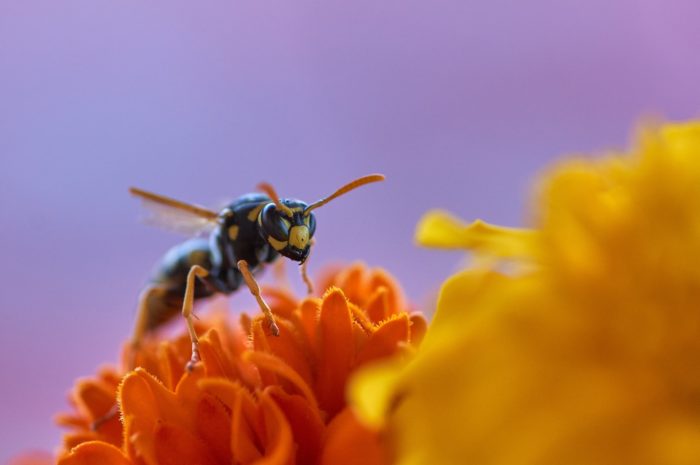
Chemical Methods of Wasp Removal
Commercial insecticides and aerosols specifically formulated for wasp control can be highly effective in eliminating wasp infestations.
These products often contain potent insecticidal ingredients that quickly incapacitate and kill wasps upon contact.
Our well-researched list of wasp-killer insecticide sprays will surely help you to choose the best wasp-killer spray as per your needs.
When using chemical methods for wasp removal, it is important to consider the following guidelines
Read and Follow the Instructions
Carefully read the instructions and safety precautions provided by the manufacturer on the product label. Follow the directions for application, dosage, and recommended protective measures to ensure effective and safe use.
Choose Wasp-Specific Products
Select insecticides and aerosols designed specifically for wasp control. Look for products that mention wasps or stinging insects on the label, as these formulations are formulated to target their specific biology and behavior.
Safety Precautions
Wear appropriate protective clothing, including long sleeves, pants, gloves, and goggles, to minimize the risk of exposure to the insecticide.
Ensure the treatment area is well-ventilated to prevent inhalation of fumes. Keep children, pets, and other non-target organisms away from the treated area.
Environmental Considerations
Consider the impact of the insecticide on the environment. If possible, choose products that are labeled as safe for the environment or have minimal impact on beneficial insects.
Steps Involved in Treating Wasp Nests with Insecticides
When treating wasp nests with insecticides, follow these steps
Choose the Right Time
Treat the nest during the evening or nighttime when wasps are less active and most of them are inside the nest. This reduces the risk of encountering aggressive wasps and increases the chances of effective treatment.
Approach with Caution
Wear protective clothing and approach the nest slowly and calmly. Avoid sudden movements or loud noises that may agitate the wasps.
Spray the Nest
Follow the instructions on the insecticide product carefully. Typically, a direct stream of the insecticide should be sprayed onto the nest, thoroughly wetting it. Maintain a safe distance from the nest to avoid stings.
Retreat if Necessary
If some wasps escape or the nest remains active after the initial treatment, wait for a few days and repeat the process. Some nests may require multiple treatments to ensure complete eradication.
Nest Removal
Once you are certain the nest is inactive, you can remove it. Carefully dispose of the nest in a sealed bag and discard it in an outdoor trash container.
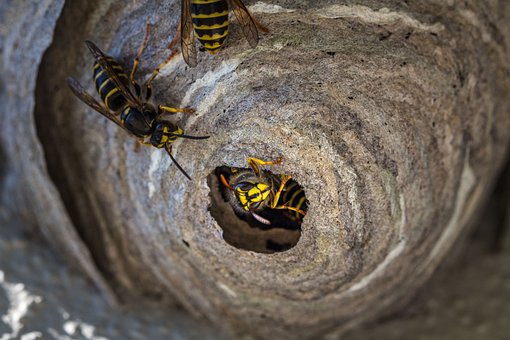
Professional Wasp Removal Services
Situations Where Professional Assistance May Be Necessary
While many homeowners can successfully handle minor wasp infestations using DIY methods, there are situations where professional wasp removal services may be necessary
Large or Multiple Nests
If you are dealing with a large wasp nest or multiple nests on your property, it can be challenging and potentially dangerous to handle the situation on your own.
High-Risk Locations
Wasps nests located in hard-to-reach areas such as tall trees, high roofs, or confined spaces may require professional expertise and specialized equipment to safely access and remove the nests.
Allergic Reactions
If you or anyone in your household is highly allergic to wasp stings, it is strongly recommended to seek professional help to minimize the risk of stings and potential health complications.
Benefits of Hiring a Pest Control Expert and Services Offered
Expertise and Knowledge
Pest control professionals have extensive knowledge and experience in dealing with wasp infestations. They can accurately identify the wasp species, locate nests, and apply the most effective treatment methods.
Safety
Professional wasp removal services prioritize safety for both the homeowners and the technicians. They have the necessary protective gear, equipment, and techniques to handle wasps safely and minimize the risk of stings.
Complete Removal
Pest control experts have the expertise to completely eliminate wasp colonies, including removing the nests and addressing any underlying factors that may attract wasps to your property.
Prevention and Advice
Professionals can provide recommendations and advice on preventive measures to minimize future wasp infestations. They can identify potential entry points and offer guidance on sealing them off and implementing effective deterrent strategies.
Tips on Selecting a Reputable Pest Control Company
When choosing a pest control company for wasp removal, consider the following tips
Licensing and Certification
Ensure that the company and its technicians are properly licensed and certified to perform pest control services. This ensures they have the necessary training and expertise to handle wasp infestations safely and effectively.
Reputation and Experience
Research the company’s reputation by reading customer reviews and testimonials. Look for companies with extensive experience in wasp removal and a track record of successful treatments.
Insurance Coverage
Verify that the pest control company has liability insurance to protect against any damages that may occur during the removal process.
Warranty and Guarantee
Inquire about the company’s warranty or guarantee for their services. A reputable company should stand behind its work and offer a satisfaction guarantee.
Environmentally Friendly Practices
If you are concerned about the impact on the environment, look for pest control companies that offer eco-friendly or low-toxicity treatment options.
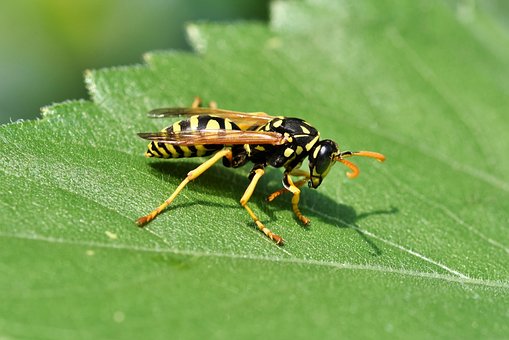
Safety Precautions
Safety should be a top priority when dealing with wasps.
These insects can become aggressive when they feel threatened, and their stings can cause severe pain, allergic reactions, or even life-threatening situations for individuals with allergies.
It is crucial to take proper precautions to minimize the risk of stings and ensure personal safety.
Guidelines for Protective Clothing and Equipment
When engaging in wasp removal activities, follow these guidelines for protective clothing and equipment
Wear Protective Clothing
Cover your body as much as possible to reduce exposed skin. Wear long-sleeved shirts, long pants, and closed-toe shoes. Tuck pant legs into socks or boots to prevent wasps from crawling up your legs.
Use Thick Gloves
Wear thick gloves, preferably made of leather or similar material, to protect your hands and arms from stings. Ensure the gloves fit well and provide adequate dexterity for handling tools or traps.
Wear Eye Protection
Protect your eyes from potential stings by wearing safety goggles or glasses. This prevents wasps from flying into your eyes or landing on your face.
Consider a Hat or Head Covering
Wear a hat or head covering to provide an additional layer of protection for your head and hair. Wasps may be attracted to hair or exposed scalp, so keeping it covered reduces the risk of stings.
Significance of Performing Wasp Removal During the Nighttime
Performing wasp removal activities during the nighttime offers several advantages
Reduced Wasp Activity
Wasps are generally less active during the nighttime as they return to their nests to rest. Treating nests when wasp activity is minimal reduces the risk of encountering aggressive wasps and minimizes the likelihood of stings.
Enhanced Treatment Success
Treating wasp nests during the nighttime ensures that most of the wasps are inside the nest. This increases the effectiveness of treatments, as more individuals are exposed to the insecticides or trapped in DIY methods.
Better Visibility
Working in low light conditions can provide better visibility of wasp nests. Wasps are less likely to be flying around, allowing for easier identification and targeted treatment of nests.
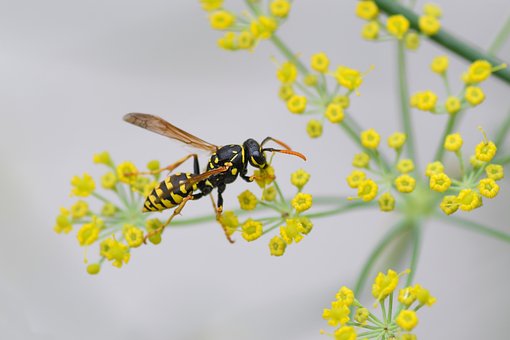
Conclusion
Say goodbye to unwanted wasp guests with confidence using the tips and techniques outlined in this complete guide.
Whether you opt for non-toxic methods, harness the power of chemical solutions, or enlist professional help, your journey to a wasp-free haven starts now.
Remember, safety is paramount, so take precautions, follow instructions, and choose the approach that suits your needs best.
Embrace a wasp-free future and enjoy your space to the fullest.

